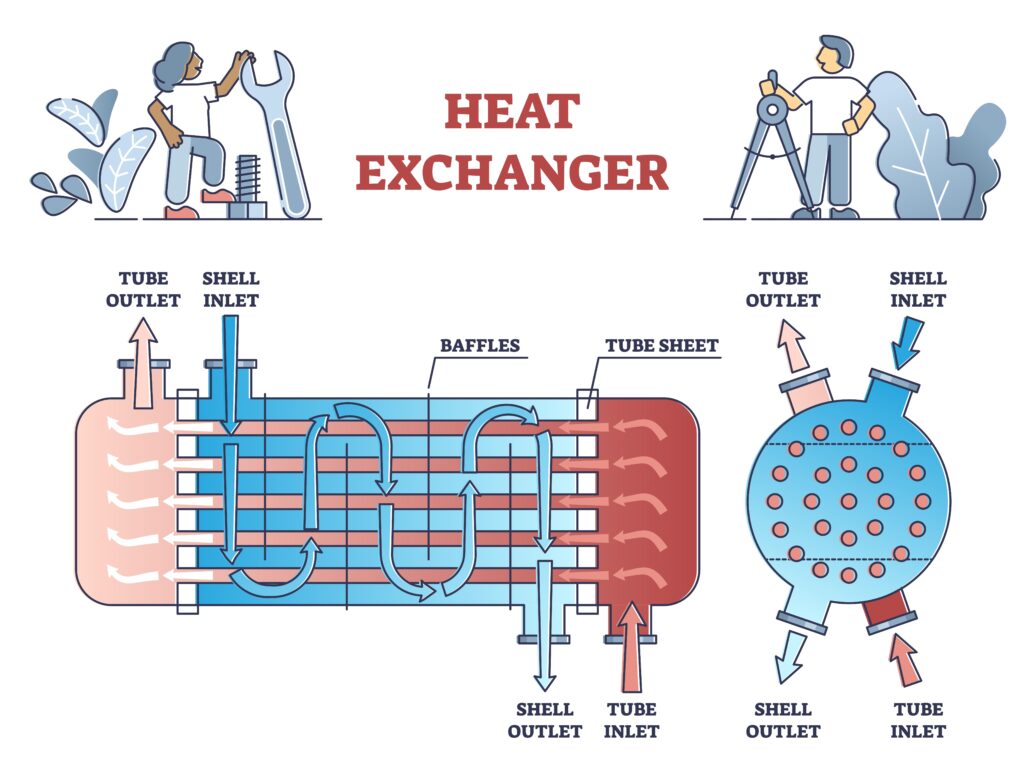Heat exchangers are devices designed to transfer energy from one fluid or gas to another without mixing the two flows. Depending on the type of heat exchanger employed, the heat transferring process can be gas to gas, liquid to gas or liquid to liquid. In heat exchangers, there are usually no external heat and work interactions. Typical applications involve heating or cooling of a fluid stream of concern and evaporation or condensation of single- or multicomponent fluid streams. In other applications, the objective may be to recover or reject heat, or sterilize, pasteurize, fractionate, distill, concentrate, crystallize, or control a process fluid. Common examples of heat exchangers are shell and tube exchangers, automobile radiators, condensers, evaporators, air preheaters, and cooling towers.

Heat exchangers are frequently characterized by construction features. Four major construction types are tubular, plate-type, extended surface, and regenerative exchangers.
Shell-and-tube exchangers, as a tubular HEs, are generally built of a bundle of round tubes mounted in a cylindrical shell with the tube axis parallel to that of the shell. One fluid flows inside the tubes, the other flows across and along the tubes. The major components of this exchanger are tubes (or tube bundle), shell, inlet head, outlet head, baffles, and tube-sheets.
Shell-and-tube exchangers are classified and constructed in accordance with the widely used TEMA (Tubular Exchanger Manufacturers Association) standards (TEMA, 1999), DIN and other standards in Europe and elsewhere, and ASME (American Society of Mechanical Engineers) boiler and pressure vessel codes.
There are three heat transfer operations that need to be considered in the design of a shell and tube heat exchanger:
- Convective heat transfer from tube-side fluid to the inner wall of the tube,
- Conductive heat transfer through the tube wall
- Convective heat transfer from the outer tube wall to the shell-side fluid.
Hence the optimum thermal design of a shell and tube heat exchanger involves the consideration of many interacting design parameters such as: thermophysical properties of fluids in the tube-side and shell-side, pressure drop limits, selection of heat transfer models and fouling coefficients, selection of heat exchanger layout and number of passes, specification of tube parameters – size, layout, pitch and material, setting upper and lower design limits on tube length, specification of shell side parameters – materials, baffle cut, baffle spacing, etc.
The Heat exchangers can be installed and configured vertically or horizontally depending on the service and other factors.
Our self-cleaning system is based on the fluidization of cleaning particles in the tubes, which requires a vertical orientation of the heat exchanger. More information about the technology.

